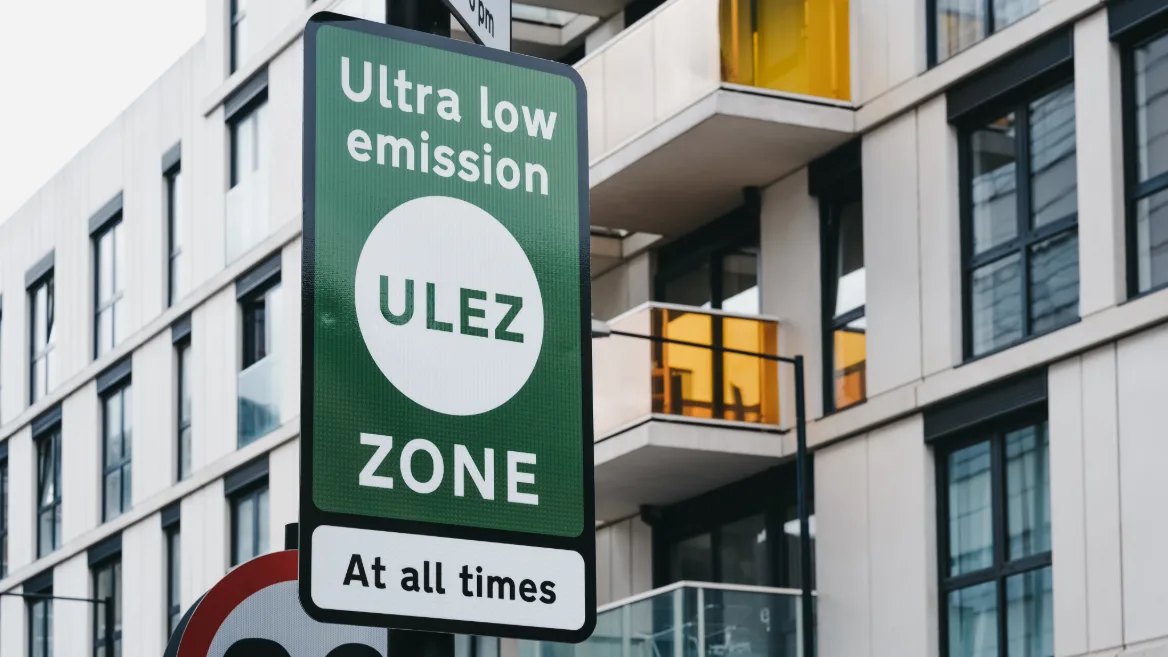When you’re driving a heavy goods vehicle (HGV) in the UK, speed restrictions aren’t just guidelines, they’re legal requirements made to protect everyone on the road.
HGV speed restrictions vary depending on road type, vehicle weight, and sometimes even your load. In this guide, we’ll break down the current rules, cover penalties, and share some best practices to help you stay safe and legal.
What we’ll cover
Fleets, bookings, subcontractors, compliance & payments.
With HX, you can manage them all in one place.
National speed limits for HGVs and LGVs
HGVs and LGVs each fall under different speed regulations depending on weight and road type. HGVs are vehicles with a maximum authorised mass (MAM) over 3.5 tonnes, while LGVs are anything at or below that threshold.
If you’re still working out the correct vehicle class for your business, our guide on lorry sizes and UK regulations offers a detailed breakdown of weight categories, axle configurations, and legal definitions.
These LGV and HGV speed restrictions aren’t just random numbers; they’re based on years of data about stopping distances, vehicle stability, and accident risks.
Heavier vehicles take much longer to slow down and are harder to control at higher speeds. For example, according to UK parliamentary research, a fully loaded 42-tonne HGV has a total stopping distance of around 36 metres at 30 mph, compared to 23 metres for a car (and the gap widens sharply at motorway speeds).
HGV speed limit on single carriageways
Single carriageways are often the trickiest roads for large lorries due to narrow lanes, bends, and mixed traffic. The national HGV speed restrictions for vehicles over 7.5 tonnes on single carriageways is 50 mph.
This change was implemented back in 2015 to improve safety and reduce dangerous overtaking on rural roads.
HGV speed limit on dual carriageways
Dual carriageways offer two lanes in each direction, making it easier for larger vehicles to maintain steady speeds.
The speed limit for HGV on dual carriageway roads is set at 60 mph for vehicles over 7.5 tonnes. Even with the extra space, drivers need to stay alert for changing traffic conditions and signage.
LGV speed limit on dual carriageways
Light goods vehicles have slightly more freedom when it comes to dual carriageways.
The speed limit for car-derived vans on dual carriageway routes is typically 70 mph if not towing. However, if towing a trailer, the limit drops to 60 mph to maintain stability and safety.
HGV motorway speed limits
Motorways are the safest roads for long-distance freight thanks to controlled access and multiple lanes.
The HGV motorway speed limit for vehicles over 7.5 tonnes is 60 mph. This limit balances travel efficiency with the need for longer braking distances and safe manoeuvring.
For many drivers working in a freight exchange network, motorways make up a large part of daily operations. The smoother flow of motorway driving, especially smart motorways and toll roads with less traffic, helps keep schedules on track and cargo moving efficiently across the country.
Speed limit for HGVs with trailers and articulated rigs
Whether you’re driving a rigid lorry with a trailer or a full articulated rig, the speed limit remains 60 mph on motorways. Articulated vehicles make up a large portion of UK freight traffic, so these limits apply to many haulage operators.
Drivers must remain aware of their vehicle’s length, especially when overtaking or changing lanes.
LGV motorway speed limit guidelines
LGVs can usually follow the same motorway speed limits as standard passenger vehicles. This means 70 mph is allowed for LGVs not towing trailers.
However, it’s important to note that this 70 mph limit is not universally applicable. It applies only to car-derived vans. Larger vans (up to 3.5 tonnes) that are not car-derived must stick to 60 mph on dual carriageways, even if they’re not towing.
If towing, the limit reduces to 60 mph for all LGVs, keeping in line with stability concerns and legal requirements.

Mandatory speed limiter regulations for HGVs
Speed limiters are mandatory on most HGVs to help enforce safe driving speeds.
For vehicles over 7.5 tonnes, the limiter restricts the top speed to 56 mph, slightly below the legal motorway limit. This buffer accounts for variations like gradients, wind resistance, and tyre conditions.
If you operate a large haulage business, maintaining these devices is a legal obligation.
The same applies whether you run a single lorry or manage a small haulage business. Regular maintenance helps avoid penalties and keeps your drivers safe on the road.
Local and urban speed limit variations
Once you enter built-up areas, speed limits tighten considerably. Both HGVs and LGVs must stick to 30 mph in towns and cities unless otherwise posted.
Many local authorities also apply 20 mph zones near schools, residential areas, and high pedestrian zones for extra safety.
Local councils may introduce temporary restrictions for construction or special events. Always check for signage indicating lower limits or roadworks. Ignoring these temporary limits could result in fines and penalty points.
Even if you’re driving in familiar areas, road layouts and limits can change frequently. Keeping up to date ensures you don’t fall foul of unexpected restrictions.
Staying alert helps protect pedestrians, cyclists, and other vulnerable people using the road.
Penalties and enforcement for HGV speeding
Ignoring HGV speed restrictions carries stiff penalties that affect both drivers and operators. Offenders face fines, penalty points, and possible disqualification depending on the severity of the offence.
If you’re thinking of starting a transport company, understanding these regulations early on is key to staying compliant from day one.
For companies, repeated offences can threaten the Operator’s Licence, potentially shutting down business operations. Even minor infringements add up quickly if not addressed.
Compliance isn’t just about following rules; it protects your business long-term.
Tachograph data provides clear evidence of speed compliance during audits and inspections. Ensuring your fleet operates within legal limits keeps your records clean.
Prevention is always better than arguing your case in front of a Traffic Commissioner.
Best practices for safe driving near HGVs
It’s not just drivers of HGVs who need to understand the rules. Other road users should give lorries space, especially when overtaking or merging.
If you can’t see the lorry’s mirrors, assume the driver can’t see you either.
Cutting in too sharply after overtaking can create dangerous situations. Large vehicles need extra time and distance to stop safely.
Giving HGVs plenty of space benefits everyone sharing the road.
Remember that even fully loaded lorries still need to navigate tight junctions and roundabouts. Be patient when following or approaching one in built-up areas.
A little extra caution helps everyone get home safely.
Frequently asked questions
What speed can an HGV do on a dual carriageway?
The dual carriageway speed limit for HGVs over 7.5 tonnes is 60 mph. This applies whether fully loaded or empty. Always watch for local speed signs that may override national limits.
What is the maximum speed limit on highway for lorries?
On UK motorways, the maximum legal speed for HGVs over 7.5 tonnes is 60 mph. For LGVs not towing, the limit rises to 70 mph. Towing reduces LGV limits to 60 mph.
Can HGV do 60mph?
Yes, HGVs can legally travel at 60 mph on dual carriageways and motorways. However, many vehicles are restricted to 56 mph by mandatory speed limiters. This helps improve road safety and fleet fuel efficiency.
What is the max speed for dual carriageway?
For HGVs over 7.5 tonnes, the dual carriageway speed limit is capped at 60 mph. LGVs may drive up to 70 mph unless towing, in which case it’s 60 mph. Always follow posted signs for local variations.




